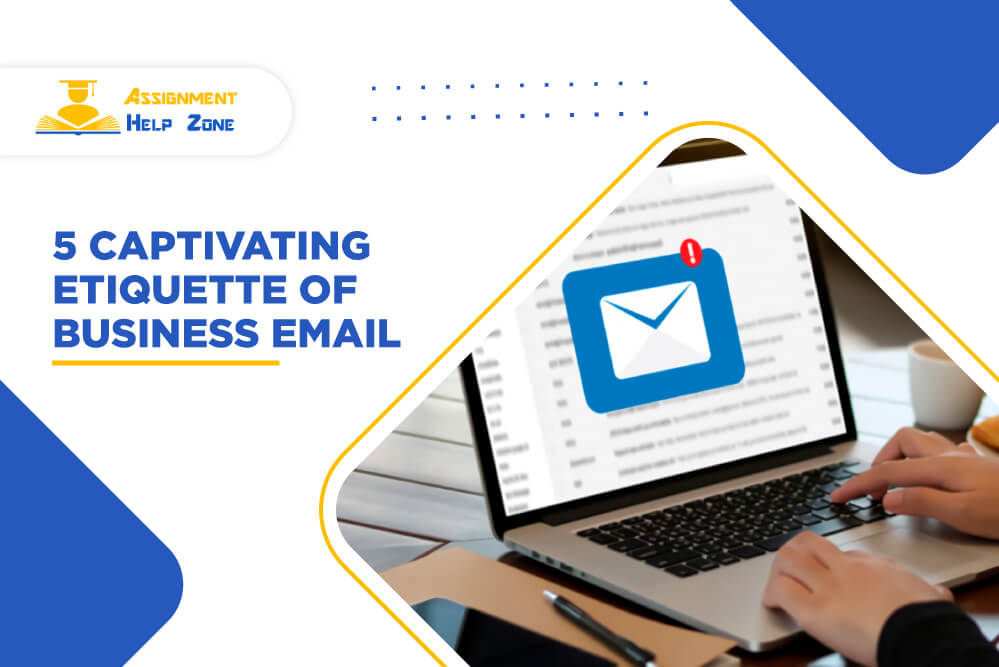Previously you might have learned 15 foolproof tips for writing a great assignment. In this article, we bring to you another effective yet important knowledge related to writing that is effective email writing.
Writing e-mails is daily bread for almost every one of us. It is all the more astonishing how many professionals make mistakes during writing.
Do you feel that your emails often go unanswered or don’t go down well? Is this perhaps because you are not making optimal use of this form of communication which is writing? Lots of people tend to be writing emails quite loosely.
How Do I Write A Business Email?
In a nutshell – considerately and with care! Writing a perfect business email shows professionalism and respect for the recipient. This takes extensive time but is necessary for professional life. Always write your business emails in a specified manner. Also, ensure that your text is informative, well-written, and neatly formatted. Make it clear what it is about and help the recipient understand your concern or business.
ALSO,
It is also necessary that you be to the point – as to the point as possible, keeping politeness and form intact. Due to the brevity, you reduce the content to the essentials. This will make it easier for the reader to pull out the important information. Moreover, less time is going to be spent: you for writing business emails and the recipients for reading.
You can save the recipient more time by not sending business e-mails that are unnecessary. Unnecessary business emails come in three situations:
- Distribution
Business E-mails can be sent to numerous recipients with just a few clicks. That can be very useful, but especially when writing back, “Reply to all” creates junk. Your reply business email is interesting for only one who has sent the business tips email in the first place. So every time thinks about who your email is relevant for.
- Inquiries
Business Emails are no substitute for conversations and e-mails are not chats. You can save yourself and your email recipient a lot of time and nerves, if you instead of writing back and forth, prefer to pick up the phone. It is then actually advisable to summarize what has been said in an email after the conversation. So everyone is on the same page.
- Trifles
In everyday office life, it quickly gets boring. That is why it has become common practice in some companies to entertain each other with funny e-mails. But the senders rarely ask themselves whether these are really wanted by the recipients. Its better to tell your jokes while gathered in person, instead of disturbing others at the workplace by sending emails.
ALSO,
As important as it is to keep e-mails short, you should never do without courtesy and etiquette, especially in a business context. A reasonable salutation, please and thank you, friendly greetings at the end – seemingly minor things that are still of great importance in today’s century and are still regularly ignored. But when you send an e-mail to someone, in most cases you have a concern: you want information, ask for an appointment, or at least want the recipient to see your information. This is why it is advisable to stick to email etiquette.
They increase the chance that your e-mail will be taken seriously and answered by the recipient. You can also consider taking assignment helper UK assistance. They have experts who can help you greatly with drafting a perfect business email.
Step By Step Considerations To Write An Email
As with emails on paper, e-mails follow a certain pattern. Since all readers know and expect this standard, you should structure your digital emails accordingly. This will make it easier for your readers to keep track of your text.
1. Subject
At the beginning of every email, there is the often-ignored subject line. Its reason is to put forward the subject of the email to the recipient at first glance – and should therefore be chosen that way. In contrast to the postal letter, the use of the subject line in e-mail correspondence is that it is already displayed in the overview of the inbox. This lets recipients to think whether to take their time immediately after receiving the email or later. In addition, the information in the subject line helps to find and sort e-mails again.
Do not use a subject line that does not specify the topic, is much too lengthy, or even contains aggressive words. In email marketing, a lot of energy is put into creating effective subject lines. By utilizing A and B tests and statistics, people try to optimize opening rates. If you write an e-mail on a day-to-day basis, you probably have no advertising intentions. Still, you want your mail to be opened. So make an effort already with the creation of the appropriate subject.
2. Greeting
You begin the actual text of your email with a combination of greeting, appreciation, and salutation.
- How Formal Do You Have To Be?
It is better to be too formal and polite than too little. You are always on the safe side with the classic phrase: “Dear ”. This formula is the right choice, especially if you are addressing people in a higher hierarchy or strangers. Only the ones with whom you need to become more formal are leading managers of state or religious dignitaries. If you already know her better, you can also put “Dear” or a friendly “Hello” at the beginning of your email. A “hello” or “hi” is only acceptable among good colleagues.
- Who Should I Name First?
If there are several addressees, all of them must of course be addressed. “Dear Sir or Madam” is only acceptable for emails that do not have a specific contact person but are addressed to a company or department. Therefore, one has to ask oneself in which order the person’s written to appear in the greeting. In general, people who are higher in the hierarchy are always mentioned first. If the people are on the same level, it is best to sort them alphabetically: Everyone can understand this order, and nobody feels neglected. Whether you follow the classic rule that women are mentioned before men of the same rank depends on your personal taste or the customs of the company.
- What If I Am Not Sure Whether The Contact Person Is Male Or Female?
Sometimes you only know the last name of the contact person or the first name cannot be assigned to a gender. Then you should do some detective work because a wrong salutation can put your mail on the sidelines. Company websites, social media, or phone books can help in this uncomfortable situation. It may be useful to call the HR department, especially for larger companies. If there is no other way, the impersonal “Dear Sir or Madam” has to be avoided.
3. Introduction
Before you start with your real concern, you should introduce your text. Keep these introductory words as short as possible, because you don’t want to waste the reader’s time or your own writing.
The function of the introduction is to raise the mood of what is written before the real issue begins. Personal and individual questions or comments are particularly suitable for this. Avoid standardized phrases and focus more on the person. Questions about your vacation, recovering from illness, or driving home after a meeting show that you really care about the other person. You can also use the introduction to introduce the topic (as with an application), introduce yourself, or briefly revisit a previous conversation.
4. Main Part
The heart of your email – the aim here is to convey content in a compact and well-structured manner. Always keep in mind that readers need to understand the information quickly and, above all, correctly. There are a few rules that you should follow when writing emails:
- Short Sentences
When in doubt, readers will simply resign themselves and not take in any information. You should therefore use simple sentence constructions.
- Bolding And Italics
Optical highlighting enables readers to find the most important data and facts more quickly. But that only works if these are used as accents.
- Useful Paragraphs
Paragraphs structure your text. Subdivide your e-mail so that it is easier to identify contexts. As a rule, you can remember that you should plan around three sentences per paragraph.
- Lists
You can use lists to present data and facts in compact form. Data on a meeting, costs for the upcoming project, and participants on the next excursion: the most important information can be seen at a glance – even if the mail is opened again. Recipients do not need to scan the entire text again for this information.
- Simple Words
Don’t make it any more complicated than it already is. At best, use simple words that everyone can understand. You cannot assume that readers will first look up words that are unfamiliar to them.
- Positive Messages
Use positive language so that the recipients of your e-mails accept the content benevolently, remember it, and, if necessary, implement it. It is especially important when you are criticizing that you remain constructive. Focus on what can be done better rather than describing what is going badly or not working.
5. Closing
If you want to write an e-mail correctly, you should also find a rounded end to your message. Use the ending to house a call-to-action or to leave the recipient with a positive feeling in your text.


